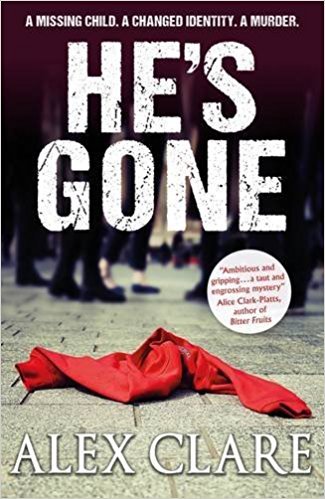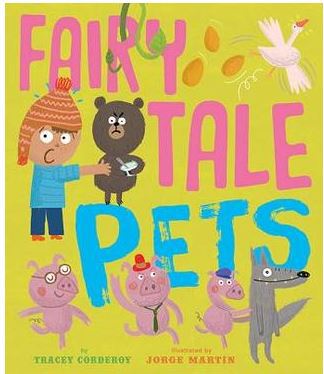Last January’s Women’s March events all over the world raised a lot of questions about who had a right to participate, and why. The concept of “woman” has been destabilised and questioned since Simone De Beauvoir announced to the world that one becomes a woman, rather than being born one. In fact, postmodern theorists like Judith Butler have denied the existence of a subject that exists under the label ‘woman’, and instead advocates for a more diverse take on womanhood that breaks away with society’s traditional constructions and expectations. He’s Gone explores this postmodern postulate by having a trans-woman detective as a main character. Meet Robyn Bailley, DI of the Meresbourne police in Kent (UK), a working-class town witness to the industrial crisis of the 20th century. Like the town, Robyn has felt her life deteriorate for decades now. That is, until she realised that she no longer was Roger Bailley, but Robyn. Is crime fiction ready for a trans-woman main character? Apparently not. As Robyn struggles to come back to work as her true self, she will find rejection from her colleagues, Melissa – mother to Ben – and whose child’s disappearance she is investigating; and the rabid journalists who want to know more about her transition and think that maybe she is not the right person to be involved in a case involving a child. If this situation was not enough, Robyn’s daughter cannot believe what her father has become and wonders if their relationship can move forward to healthy grounds.

He’s gone can be labelled as one of the first novels to introduce a trans-woman main character in crime fiction. But the novel is also rich in female characters, and one of its peculiarities is the construction of the victim’s mother as a dislikeable woman. Robyn’s struggle is also adorned with the echoes of Melissa’s conservative church, for whom Robyn’s identity emerges as a dangerous and contagious state of identity that should not be allowed to exist: “Let me be clear. I meant why were you speaking at the press conference? Now, rather than thinking about Benjamin, everyone will be focusing on you and your deviance”. Melissa Chivers emerges as one of the most unlikable characters in contemporary crime fiction, where the victim and their family needed the sympathy of the detective, and the reader, in order to move the story forward. Not in this novel. The creation of Melissa as unlikable character works as a test for political correctness when she is described as an overly ambitious black woman who made herself, but who is a terrible mother to her kid. This type of femininity, that goes against the traditional image of the loving and caring mother, presents the reader with questions about how the expectations of being a woman in contemporary society, as well as the importance of seeing beyond stereotypes in criminal investigations.
Ironically, Robyn perceives Melissa as a woman that exudes the power and authority that she feels she is lacking, and that Roger clearly had. In an effort to present herself to the world in a similar light, Robyn keeps in mind Melissa’s body: “She remembered how Ms Chivers stood when she exuded a feminine authority and turned a little to the side so that she no longer faced the camera head on, putting one foot half a pace in front of the other. That felt more natural”.
Along with posture, Robyn has also incorporated new hair, and the use of make-up and nail varnish to the set of acts that make her a woman. These typically feminine products become her trademark, as they are used to trace the thick line that has traditionally separated masculine and feminine aesthetics. Her insistence on adopting traditional female markers could not have found a better historical moment, as Third-wave feminism, postmodernism at its best, relies on traditional feminine traits. As Jennifer Baumgardner and Amy Richards explain in Manifesta: Young Women, Feminism, and the Future (New York: Farrar, 2000): ‘Girlie encompasses the tabooed symbols of women’s feminine enculturation—Barbie dolls, makeup, fashion magazines, high heels (p. 136.) However, traditional feminine aesthetics are constructed in spaces restricted to women with no safe space for masculinity. As Robyn faces her first week as a woman, the novel takes us back to Roger’s decision to buy women’s clothes for the first time, and the worried looks of the shop assistant that forced him to purchase Robyn’s wardrobe fully on the Internet: “She’d visited a few shops as Roger but the questioning looks from shop assistants whenever she’d picked anything up had put her off and decided it was much easier to buy the first set of female clothes online”. Hence, social media and the Internet emerge as a safe place in which liminal identities can be performed and shared with people with a similar life experience. The community Robyn found online, as well as the anonymity of online shopping, granted her the opportunity to explore alternative constructions of womanhood, as well as people who, like her, do not adhere to traditional cisgender discourses. The ultimate questioning of the construction of safe spaces for the performance of non-normative gender identities comes up in the form of bathrooms. After Robyn’s struggle to choose which bathroom to use, the issue intersects with Donald Trump’s recent revocation of federal protection for trans-students in schools all over the country starting a conversation about human rights, and the construction of gender identity. In her first day back, she enters the men’s bathroom, but she will later on move to the disable’s one.
The patriarchal segregation of non-white and non-normative bodies outside the dominant discourse tangentially emerges as a key element in the construction of the postmodern identity and the forensic detective process. As Robyn negotiates her new identity with herself and her colleagues, she ponders on the physicality of forensic science, and the need to go beyond the metaphysical and consider the importance of the victim’s personal narrative and life story. This moment, although as brief as a paragraph, constitutes a remarkable point of inflexion in contemporary crime fiction, comes when the remains of a victim need to be identified though DNA testing. In this precise moment – and still a year far from her complete physical transformation into a woman – Robyn realises that were she to die, her DNA would come up as masculine in the system. With this scene, Robyn’s narrative is questioning long-held beliefs about the legitimacy of forensic science, and the blind trust that the 20th century deposited into scientific discourses. It is true that the production of scientific knowledge needs to rely on the metaphysical world in order to avoid past mistakes such as the pseudo-scientific theories used to back up racism and discrimination against women. But, crime fiction goes a step beyond this metaphysical world and posts questions about the construction of the subject victim from the investigating team’s point of view.
The necessity of approaching the detective process from a more personal point of view led to the questioning of Robyn’s detective process, as she sees how the loss of Roger’s male gaze has resulted in her re-education about what she is allowed to see as a policewoman. If Laura Mulvey met Robyn, she would have a perfect case study of how men are given the privilege of looking, while women are looked at. The term “gaze” appears throughout the novel linked to the pressure Robyn feels from people around her, yet another struggle of her new identity. This is reflected in Roger’s pastime as a photographer, while Robyn struggles to pick up a camera after her transformation. However, discrimination is subtler, with of her peers presuming that Robyn, unlike Roger, will not be driving the police car, relegating her to the passenger’s seat, where she is a mere spectator. As the late John Berger stated (1972): ‘Men act and women appear. Men look at women. Women watch themselves being looked at’. Robyn herself feels the weight of this gaze when the case becomes news, and she is faced with several press conferences. Have the audience noticed her chipped nail polish? Will the camera enhance the different between her skin tone and her new foundation? And, will the evening audience notice that the laser removal still did not get away with her beard? Directly related to being watched comes sexual harassment, which takes a darker turn with Robyn’s trans identity, as an officer jokes she may be on her period, on the one hand constructing women’s minds as unstable and, on the other hand, being cruel to Robyn who clearly does not have a period. Her final recovery of agency will come through the detecting process, as Robyn solves three cases in collaboration with her team and finally finds peace in her negotiation of her past and present by incorporating Roger’s professional experience into Robyn’s life story. In the eureka moment that postmodern fiction relies on – that scene where everything comes together and the truth is revealed to both the main character and readers – Robyn can only solve the case because of the specific knowledge that comes from lived experience, in her case, a female (albeit short) lived experience.
As Roger morphed into Robyn, she was faced with the task of redefining her relationship to those in her inner circle of friends. The novel centres around Robyn’s relationship with her daughter, Becky, to whom Robyn communicated her new identity in a letter. The necessity to redefine paternity in the postmodern is also highlighted by the case Robyn investigates, as the disappeared child’s father is unknown. However, Robyn’s daughter appears as a young agent of change, who will offer the detective the possibility of deciding which place to occupy in her life. Robyn’s decision to remain Becky’s father opens up a dialogue about how gender structures family life, and the necessity to break way with traditional representations of motherhood and fatherhood. The case itself works as a bone of contention, as Robyn faces the recent of the emergence of conservative groups that, in the postmodern era, fight for a return to more stable definitions and meanings. As the mother of the victim, a religious extremist member of a cult against abortion, homosexuality, birth control, and any kind of “diversity gone mad”. Melissa voices religious concerns about gender fluidity, but The Men’ Rights movement also makes an appearance highlighting the necessity of every child to have a father relaying on traditional discourses based on gender-biased arguments. However, the eventual defeat of these discourses comes from Robyn’s solving of the case and her refusal to give up a job she loves.
He’s Gone by Alex Clare is a thrilling post-modern novel in which the inclusion of a trans-woman detective questions the conception of the detective novel and its normative and traditional representations of women as victims. However, it is still to be seen whether the novel receives praise for its inclusion of a transwoman as a main character in a literary tradition that has been considered masculine since its inception, or whether the creation of a trans character by a cisgender woman is still problematic. I, for one, was very happy to meet Robyn, and I hope that more writers – cisgender, trans, and genderqueer – venture into crime fiction to prove that the word ‘detective’ welcomes all subjects alike. It’s just about time.
Share the literary love:




